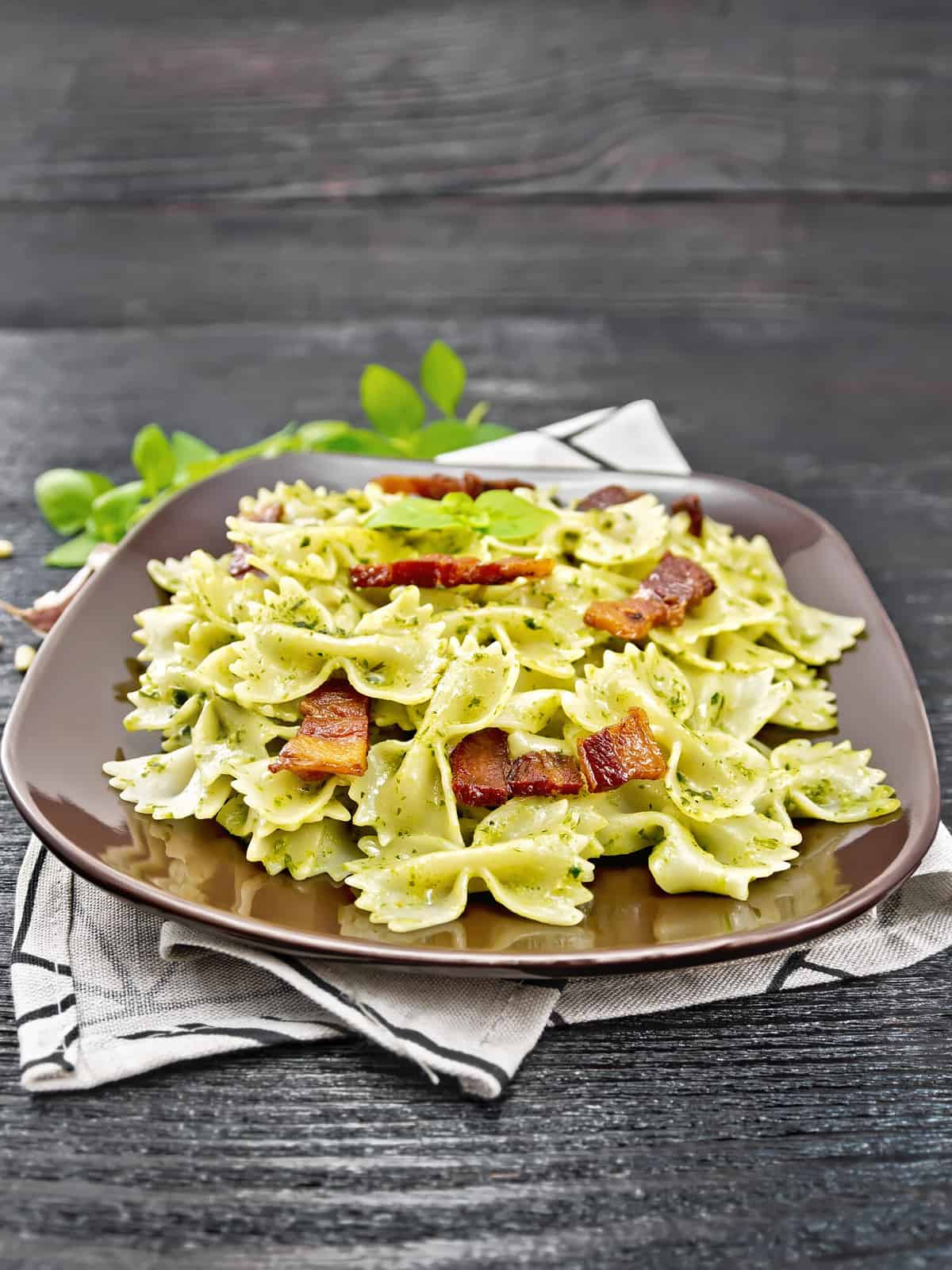Pasta is a weeknight staple in many homes across the world. From chicken alfredo, spaghetti, macaroni and cheese, and the classic lasagna, there are numerous ways to enjoy the multiple shapes and types of pasta. Our ancestors have been eating pasta for centuries; history shows that pasta-like food existed even in China in 3000 B.C. The popularity of pasta begs the question, is pasta healthy? Well, it depends. Pasta does have some added health benefits. However, the type of pasta really does make a difference. Now, let's take a look at what science actually says.
What is Pasta?
Pasta is a popular food that many eat, typically with meat and sauce. Side dishes that many enjoy with pasta are vegetables, salads, and some carbohydrates. Pasta is made from durum wheat, eggs, and water. It also comes in many different shapes, although the shapes have no bearing on the health benefits.
When cruising the grocery store aisle, you will see options for enriched, refined, and whole-grain pasta. In general, whole-grain pasta is a healthier option than enriched and refined pasta. This is because enriched and refined pasta is made of wheat with the germ and bran removed. Whole-grain pasta, on the other hand, still has these parts intact.
The Processing Method Plays a Role in Health
The most common type of pasta is refined pasta. To truly understand the difference between refined pasta and whole-grain pasta, the processing method needs to be explored.
Most types of pasta are made of wheat, although it is possible to find rice or barley pasta. When the grain is going through processing, if it's refined, the bran and germ will be stripped. In wheat, the bran and germ are where most of the nutrients lie. Therefore, when it is stripped, the nutrients are also stripped. Whole grain, on the other hand, still has the entire wheat kernel, bran, and germ included, leaving the nutrients they contain.

©kostrez/Shutterstock.com
What Are the Health Benefits and Drawbacks of Pasta?
Pasta, like many other foods, has its own benefits and drawbacks. The health of pasta is not only dependent upon the type of pasta chosen but also on the toppings and side dishes served. While pasta is usually served with a vegetable, the sauce and toppings, like cheese, will add to calories, fat, and carbohydrates.
- Carbohydrates: Pasta contains a high amount of carbohydrates. With consuming carbohydrates may come a higher risk of heart disease, higher blood pressure, and bad cholesterol. Refined pasta contains more carbohydrates than whole grains.
- Fiber: Whole wheat pasta has more fiber. Fiber is very filling, meaning those who eat it will feel fuller for longer. However, refined pasta contains less fiber.
- Gluten: Most pasta contains gluten, although this isn't always the case. It is possible to find gluten-free pasta. Some people have an intolerance to gluten or sensitivity that causes digestive problems.
- Increase in Blood Sugar: Those who consume pasta may have a higher risk of obesity. The increase is because of carbohydrates, which can increase blood sugar quickly. Some studies point to higher spikes in blood sugar, possibly contributing to weight gain.
- Essential Nutrients: Whole grain pasta has higher essential nutrients, such as B vitamins, copper, and manganese.

©Fernati2007/Shutterstock.com
Is Pasta Healthy?
Although pasta is higher in carbohydrates and refined pasta does not contain a plethora of essential nutrients, there are simple ways to increase the health benefits of pasta. For starters, choosing whole-grain pasta can lower the risk of heart disease because of its fiber. The more fiber pasta has, the less you will want to eat because it contains a higher amount. Fiber is very filling! Also, adding foods to eat with the pasta will give you an added benefit. Try pairing pasta with lean meats such as chicken or a green side dish like green beans or Brussels sprouts.
Additionally, consuming pasta in moderation will allow you to enjoy the dish if you are a pasta lover yet keep the disadvantages low.
Pasta Dishes to Try Today
- Mediterranean Chicken and Pasta Recipe
- Smoked Sausage Pasta Bake Recipe
- Garlic Lime Shrimp and Pasta Recipe
- Bacon Cheeseburger Pasta Recipe
- Italian Chicken with Pasta Recipe
Keys Takeaways
- Pasta contains a higher amount of carbohydrates, which may lead to a higher risk of heart disease, high blood pressure, and insulin.
- Whole grain pasta has more fiber than refined pasta, and it can lead to filling fuller for longer.
- Pasta also contains gluten, which some people have sensitivities or intolerances to.
- If you enjoy pasta, choosing whole-grain pasta can give you the added benefits of essential nutrients like copper and magnesium.
- Whole wheat pasta does not have the germ and brain stripped, which contains all the nutrients of the wheat.
So, is pasta healthy? The answer is it can be depending on the type of pasta you enjoy eating! Whether you love pasta or only enjoy it occasionally, knowing the health benefits and downfalls can help you make smart nutritional choices. Eating pasta in moderation and opting for whole grain will allow you to enjoy delicious dishes yet still consider the downfalls. There are also plenty of ways to add health benefits to pasta, with green vegetables, salads, low sodium sauces, and lean meat like fish and chicken.
The image featured at the top of this post is ©artem evdokimov/Shutterstock.com.
